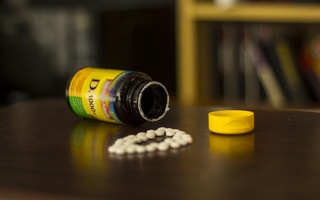In a recent study conducted by the Hotamisligil Laboratory at the Harvard School of Public Health, a group of scientists discovered that a naturally occurring molecule called TUDCA, or Tauroursodeoxycholic acid, could prevent Type 1 Diabetes.
Feyza Engin, lead author of the study, said that she and her team sought to understand the role of endoplasmic reticulum, an organelle that synthesizes and modifies proteins, stress in the onset of diabetes. According to Engin, high levels of stress incapacitate endoplasmic reticulum, or ER, functioning by disrupting proper protein folding in insulin-producing beta cells, which eventually results in Type 1 Diabetes.
“The reason the study is getting a lot of attention is because [Type 1 Diabetes] is an autoimmune disease...but in this study we focused on the beta cells,” said Engin, who is also a research associate in the genetics department at the School of Public Health.
In patients with Type 1 Diabetes, beta cells are attacked by the body’s own immune system, so that the body can no longer create the necessary amount of insulin. However, Gokhan S. Hotamisligil, senior author of the study, said that the body’s autoimmune response is not enough to cause Type 1 Diabetes.
Hotamisligil, who is also the chair of the genetics department at the School of Public Health, said there must be something else that makes beta cells susceptible to the attack.
“We found that an organelle, ER, seems to exhibit signs of dysfunction in the course of diabetes,” he said.
Drawing on information from the lab’s earlier studies on Type 2 Diabetes, the researchers decided to administer a naturally occurring molecule, TUDCA, which they had found reduced ER stress in cases of Type 2 Diabetes. Researchers discovered that when TUDCA was administered to mice, it enhanced ER function and was able to prevent Type 1 Diabetes.
Although the use of a molecule like TUDCA would not be able to cure Type 1 Diabetes in those who already have it, this study has implications for those who are at risk for Type 1 Diabetes or have been recently diagnosed with the disease.
“I want to look at the big picture and tackle this question in a more detailed way using genetic and cellular biology techniques,” said Engin.
Both Engin and Hotamisligil said that TUDCA has yet to be tested on individuals, but since the chemical has already been approved for human use, it is possible that tests will begin in the near future.
This article has been revised to reflect the following correction:
CORRECTION: Dec. 4, 2013
An earlier version of this article incorrectly stated the function of the endoplasmic reticulum. In fact, the organelle synthesizes and modifies proteins rather than producing antibodies.
Read more in News
Community Members Dash Around Cambridge in Yulefest 5KRecommended Articles
-
Red Meat Linked to Type 2 DiabetesOne daily serving of 100 grams of unprocessed red meat accounted for a 19 percent increase in risk of developing diabetes, an HSPH study found.
-
 LaHaie '02 Runs in Honor of Fallen Crimson Teammate
LaHaie '02 Runs in Honor of Fallen Crimson Teammate -
Lack of Sleep May Cause DiabetesFollowing an irregular sleep and meal schedule over a prolonged period can lead to an increased risk of obesity and diabetes, according to a new study from Brigham and Women’s Hospital and the Division of Sleep Medicine at Harvard Medical School.
-
 Vitamin D Linked to Diabetes
Vitamin D Linked to Diabetes -
 Walnuts Reduce Risk of Diabetes
Walnuts Reduce Risk of Diabetes -
Hormone May Help Fight Diabetes, Research SuggestsResearchers at the Harvard Stem Cell Institute have discovered a hormone which may lead to new treatments for patients afflicted with diabetes.













